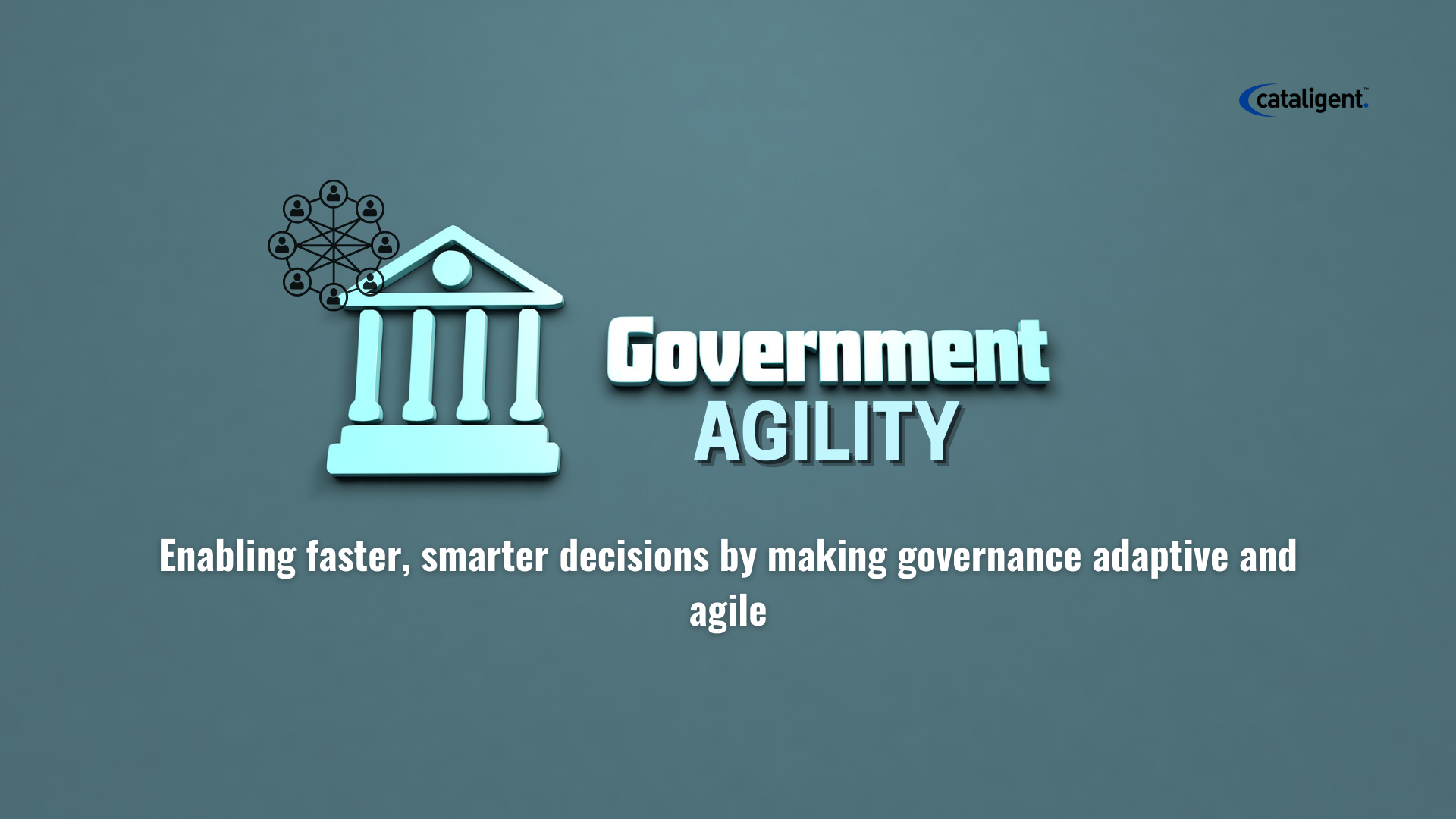Many organizations still operate with governance structures designed for a slower era. Decisions often climb a steep hierarchy, requiring multiple sign-offs and committees before execution. While these protocols once ensured stability, today they create decision bottlenecks that paralyze transformation. In markets where speed equals survival, rigid governance is not just outdated—it’s a liability.
Governance agility is the practice of redesigning decision-making structures to be faster, adaptive, and context-driven without sacrificing accountability. It allows enterprises to maintain oversight while empowering teams with the autonomy to act decisively.
What is Governance Agility?
Governance agility involves shifting from static, rule-heavy protocols to dynamic, flexible governance models. It doesn’t mean abandoning structure but rather:
- Contextual Decision Rights: Instead of a one-size-fits-all hierarchy, decisions are delegated to the individuals or teams closest to the problem. This empowers employees with both authority and responsibility, reducing delays and increasing ownership.
- Adaptive Protocols: Governance frameworks are not rigid policies set in stone but living systems that evolve alongside the business environment. Organizations can adjust protocols depending on market conditions, project types, or risk exposure.
- Integrated Oversight: Rather than relying on endless approvals, governance agility leverages technology and real-time dashboards to provide transparency and accountability. This ensures decisions are visible and measurable without slowing execution.
- Strategic Flexibility: Agile governance allows companies to quickly reallocate resources, shift priorities, or restructure oversight in response to disruptions such as regulatory changes, geopolitical shifts, or technological breakthroughs.
In short, governance agility balances speed and control, making governance an enabler of transformation rather than a blocker.
Why Governance Agility Matters Now
1. The Speed Imperative
Traditional governance often results in weeks or even months of delay before an initiative gets the green light. In industries such as technology or consumer goods, where competitors can launch products in a matter of days, these delays can be devastating. Governance agility addresses this by streamlining decision-making, allowing organizations to seize opportunities faster and outpace competition.
2. Complexity of Modern Enterprises
Today’s enterprises are sprawling, global, and interconnected. They operate under multiple jurisdictions, each with unique regulations, and across numerous digital platforms that constantly evolve. A static governance system cannot effectively address this level of complexity. Governance agility introduces adaptable frameworks that can scale across regions, incorporate compliance needs in real time, and adjust to organizational structures as they shift.
3. Empowered Workforce Expectations
Employees today, especially in knowledge-based roles, expect autonomy, responsibility, and the ability to make meaningful contributions. Overly centralized governance creates frustration, disengagement, and slow adoption of transformation initiatives. Governance agility allows decisions to be made at the right level, giving employees ownership while maintaining necessary guardrails. This improves morale and accelerates buy-in for change.
4. Resilience in Disruption
When crises strike—be it a cyberattack, supply chain breakdown, or sudden regulatory shift—organizations with rigid governance struggle to react in time. Agile governance provides the flexibility to respond immediately. For example, decision rights can be temporarily shifted to local leaders during a regional crisis, ensuring rapid action without losing accountability. This resilience ensures that businesses not only survive disruption but can even gain advantage during it.
5. Strategic Innovation Enablement
Innovation often requires experimentation and calculated risk-taking. Rigid governance discourages experimentation by making approvals slow and cumbersome. Governance agility fosters an environment where innovation is not stifled by bureaucracy. Teams can experiment within pre-defined risk frameworks, iterate quickly, and scale successful initiatives across the organization. This balance of freedom and oversight accelerates transformation.
How Cataligent Enables Governance Agility
Cataligent’s CAT4 platform equips organizations with the tools to make governance agile, embedding transformation governance into daily operations.
1. Decision Pathway Visualization
CAT4 maps decision flows across the enterprise, highlighting redundant approvals and bottlenecks. Leaders gain a clear picture of where governance slows execution.
2. Adaptive Protocol Engine
Governance rules in CAT4 can be adjusted dynamically to suit project phases, risk levels, or business contexts. This flexibility ensures governance evolves with transformation.
3. Real-Time Oversight Dashboards
CAT4 delivers transparent, data-rich dashboards that allow leadership to monitor accountability without micromanaging.
4. Risk-Embedded Autonomy
By integrating risk management into decision workflows, CAT4 ensures teams have the autonomy to act while staying within guardrails of compliance and security.
5. Scenario-Based Governance
CAT4 allows organizations to test governance models under simulated conditions, ensuring resilience and adaptability.
Illustrative Examples with CAT4 in Action
- Reducing Decision Bottlenecks: A global telecom used CAT4 to visualize its approval pathways and discovered 40% of decisions were delayed by redundant steps. Simplifying workflows reduced average decision cycles by two weeks.
- Adaptive Crisis Governance: During a supply chain disruption, a consumer goods company adjusted governance protocols in CAT4 to grant local managers temporary decision rights. The move restored service levels faster while maintaining oversight.
- Risk-Embedded Autonomy: A healthcare provider integrated compliance protocols into CAT4’s workflows, enabling medical teams to adopt new digital tools without waiting for centralized sign-off.
Business Transformation Angle
Transformation efforts often stall because governance is too slow to keep pace with change. Governance agility ensures that transformation is not derailed by bureaucracy but fueled by a decision-making structure that is both fast and accountable.
Cataligent’s CAT4 platform embeds governance agility at the core of transformation, ensuring enterprises make decisions with confidence, speed, and resilience.
Conclusion: Governance as an Enabler, Not a Barrier
The future belongs to organizations that can combine structure with speed. Governance should no longer be viewed as a necessary evil but as a strategic enabler of transformation. By adopting governance agility, enterprises empower their people, strengthen resilience, and accelerate innovation.
With CAT4, Cataligent transforms governance from a bottleneck into a catalyst—ensuring that every decision, whether routine or critical, drives transformation forward.
Agile governance isn’t about loosening control; it’s about enabling transformation at the speed of business.

